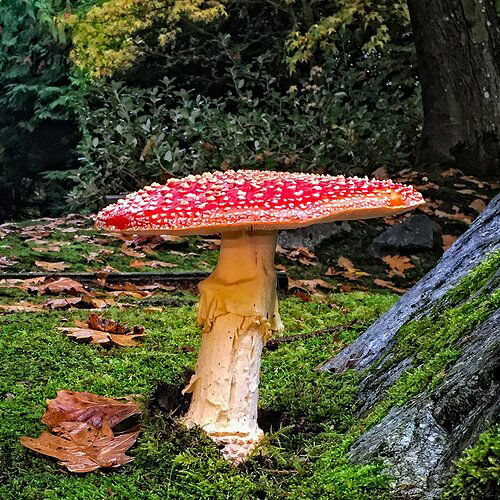Critique Style Requested: Initial Reaction
Please share your immediate response to the image before reading the photographer’s intent (obscured text below) or other comments. The photographer seeks a genuinely unbiased first impression.
Questions to guide your feedback
Is the size of this specimen obvious? The Bigleaf maple leaves on the ground are typically 6-12 inches across.
Other Information
Please leave your feedback before viewing the blurred information below, once you have replied, click to reveal the text and see if your assessment aligns with the photographer. Remember, this if for their benefit to learn what your unbiased reaction is.
Image Description
A large, conspicuous mushroom, Amanita muscaria, the infamous “Magic Mushroom” of the 60’s and 70’s, is generally common and numerous where it grows, and is often found in groups with basidiocarps in all stages of development. The fruiting bodies emerge from the soil looking like white eggs. After emerging from the ground, the cap is covered with numerous small white to yellow pyramid-shaped warts. These are remnants of the universal veil, a membrane that encloses the entire mushroom when it is still very young. Dissecting the mushroom at this stage reveals a characteristic yellowish layer of skin under the veil, which helps identification. As the fungus grows, the red colour appears through the broken veil and the warts become less prominent; they do not change in size, but are reduced relative to the expanding skin area. The cap changes from globose to hemispherical, and finally to plate-like and flat in mature specimens. Amanita muscaria is a highly poisonous mushroom due to the fact that it contains psychoactive alkaloids: muscarine, ibotenic acid and muscimol.
Technical Details
iPhone 6s; 4.15mm, f/2.2 @ 4.2mm, f/2.2 @ 1/30 sec, ISO 80, handheld
Specific Feedback
Whatever you think, positive or otherwise.
